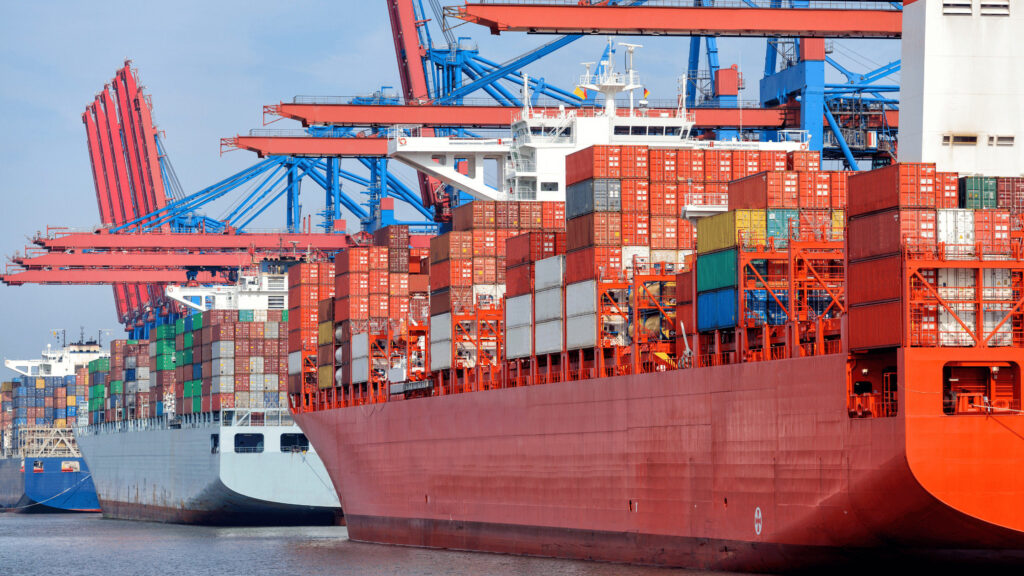Never has the reality of our living in a “global economy” been more evident than during and immediately after the COVID pandemic. Everything, from mining raw materials to manufacturing finished goods, to shipping them to retail store shelves, all slowed, and in many cases stopped. Luckily, there are technology tactics for overcoming these challenges.
Worldwide, companies that produced and moved goods to consumers drastically reduced their capacity because their workers caught the virus or were gravely concerned about doing so. To make matters worse, when the pandemic slowed, many workers decided to call it quits, leading to “The Great Resignation”.
For several months, manufacturing stopped, transportation of goods stopped, and consumers stopped going to empty stores that had little but empty shelves. “The pandemic battered every sector of the economy,” said Gustavo (Tavo) Vasconcelos, CEO of custom software company Asinpa, a trusted source for logistical solutions. “This crippled the global supply chains, wreaking havoc on both business and consumers. Hopefully, we have learned just how vulnerable this supply chain is and how future disruptions can be anticipated and ameliorated.”

Just-In-Time Inventory
For more than 20 years, manufacturers employed a “lean” inventory strategy. This was popularly referred to as “just-in-time inventory.” It was an elegant solution for reducing costs for warehousing components and raw materials, such as computer chips used in automotive manufacturing. This strategy saved a lot of money and it worked great, until it didn’t.
According to this article in Supply Chain Dive, “Lean inventory management, or just-in-time inventory planning, has been a way of thinking within the supply chain management world for decades, with Toyota often credited with pioneering the method. The automaker famously redesigned its supply chain after it experienced issues following a 2011 earthquake. In fact, Japan adopted lean practices a full decade before companies in the U.S.
“The idea, which U.S. companies began to adopt, is simple: Businesses want to try and match their level of inventory to consumer demand as closely as possible. In a well-oiled supply chain, manufacturers can meet fluctuations in demand, and theoretically sell more while reducing inventory carrying costs.
“But as the pandemic swept around the globe, bare shelves had people questioning the practice. With the global supply chain strained under the weight of the pandemic, the Biden administration set out to understand what was going wrong. A 250-page report released in June outlines some of its findings — and it points a finger at just-in-time.
“The report said just-in-time supply chain management increased risk in industries from auto manufacturing to drug making, as it reduced safety stock and companies’ ability to quickly adapt to upticks in demand.”

A Data-Driven Process
As with many business challenges, solutions are often data driven. This is especially true with the correction of logistical delays.
Asinpa’s approach to helping clients overcome supply chain issues is a predictable, measurable, and fully transparent process that guides the company’s agile software development approach. Asinpa’s application development service builds custom innovative solutions deployed through the cloud or on-prem that deliver best-in-class applications to support critical business processes.
Asinpa’s Managing partner of Mexico Operations, Jose Lizarraga, is an expert on advising clients on overcoming supply chain disruptions.
“We work in several sectors of the economy, and most have challenges with navigation of supply chain issues,” he said. “There are several questions we ask before designing a custom software solution.”
How are their business policies and compliance?
“Knowing and applying their internal and external policies to clients, providers and compliances with laws allows us to understand what could be done and what can’t be done.”
How are their purchase and reception processes?
“We analyze and apply purchase and reception best practices, according to the company’s capabilities and processes.”
How are their internal inventory processes?
“We want to thoroughly understand and optimize the inventory processes with market´s best practices.”
How do they identify their products and classify their inventory?
“We review and optimize their products’ classification for data analytics and operations improvements.”
How to Avoid Future Supply Chain Disruptions
Calling this distribution process, a supply “chain” is an apt metaphor. This supports the truth in the adage:
A chain is only as strong as its weakest link.
“We are always looking for any “weak link” in a client’s supply chain,” said Lizarraga, “Accordingly, we will follow a procedure that will enable the development of a comprehensive, logistical software solution.
“We analyze their inventory and warehousing options and capabilities. Managing different minimum and maximum products’ scenarios, according to product maintenance, costs, expiration, volume purchase and other strategies.
“We encourage having as many provider options as they can. It’s important to always have as many open bridges and good relations with providers as possible.
“We thoroughly analyze, review and enhance their supply contracts with providers and clients. This can include the creation of trade agreements and emergency clauses for as many scenarios as possible.
“Are there possible alliances with other supply chains? We want our client to know which other alliances they can forge in the worst cases. This can be as important as reviewing whether our client is prepared to switch their supply chain from one type of product to another? For instance, instead of packing and delivering shrimp, perhaps it is more profitable to pack and deliver tomatoes?”
One More (Important) Technology Tactic Consideration
As is often the case, a crisis such as the disruption in the global supply chain, reveals other, more fundamental business “landmines” that transcend logistics. The Asinpa CEO explains.
“Since COVID arrived,” Tavo Vasconcelos said, “There is an urgent and inevitable digital transformation in all types of business. Of course, this impacts supply chain management, but it is a much larger issue.
“In order to be prepared, compete and to be at the forefront of its business, a company must commit to digital transformation because, most likely, its competition is. In essence, each business is unique and if you want to offer something that distinguishes you from others, you must be prepared.”




